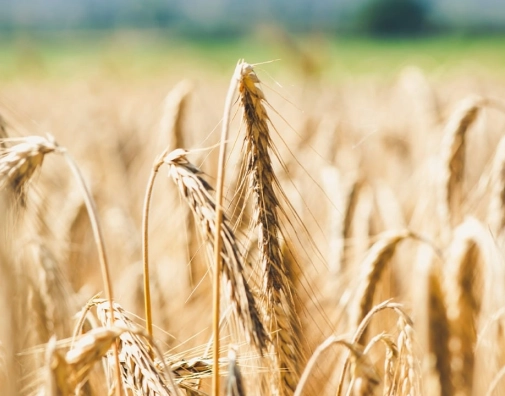
Cold, Cravings and Metabolism — How Your Genes Shape the Way You Face Winter

Pumpkins glow on porches, candy bowls overflow, and chocolate bars seem to vanish faster than ever.
As the nights grow longer and the air gets colder, our bodies start craving comfort — and, very often, sugar.
But why can some people devour half their Halloween stash without gaining a gram, while others feel every candy settle in?
The answer lies, at least partly, in our genes — specifically those that govern metabolism and thermogenesis, the body’s way of generating heat and using energy.
UCP1: The Genetics of Heat
The UCP1 gene (Uncoupling Protein 1) plays a key role in how efficiently our bodies produce heat from fat.
It’s highly active in brown fat, a special type of fat tissue that burns calories to generate warmth — the opposite of white fat, which mainly stores energy.
When UCP1 is activated, our mitochondria “uncouple” energy production to release heat, keeping our core temperature stable.
Some people carry UCP1 variants that make this process more efficient, meaning they naturally burn more calories in the cold.
Others have lower UCP1 expression — their “internal heater” stays in low gear, and the body compensates by storing more fat.
Studies in Scandinavian and Siberian populations show that UCP1 is more active in those genetically adapted to extreme cold — a true evolutionary signature of survival.
ADRB3: The Fat-Burning Switch
Another key gene for winter metabolism is ADRB3, which codes for a receptor activated by noradrenaline.
When triggered (by cold exposure or physical activity), this receptor signals fat cells to break down fat into energy — a process known as lipolysis.
But not everyone’s receptors respond equally.
Certain ADRB3 variants (like Trp64Arg) make the process less efficient, meaning fewer calories are burned and more are stored — especially in colder months, when we tend to move less and eat more.
So if your friend loses weight just by shoveling snow while you seem to “store the season,” it’s not unfairness — it’s genetic variation at work.
FTO: The Appetite Gene
Then there’s FTO — often called the “fat mass and obesity” gene.
It influences our feelings of hunger and fullness, as well as how our brains respond to high-calorie foods.
People with certain FTO variants tend to feel less satisfied after eating and crave richer foods — especially in times of stress or cold weather, when our brains are wired to seek extra fuel.
In other words, FTO might be that inner voice whispering, “Just one more candy — it’s Halloween after all…”
Genes, Environment and Seasonal Adaptation
Of course, genes don’t act alone. They interact constantly with our environment, diet, and activity level.
- Moderate cold exposure (like brisk walks or cool showers) helps activate UCP1 and ADRB3.
- Regular exercise increases energy expenditure and counteracts the effects of “storage” gene variants.
- A protein-rich, healthy-fat diet (fish, nuts, avocado) stabilizes appetite and helps regulate FTO activity.
This ongoing conversation between our genes and our habits is what scientists call epigenetics — the process by which lifestyle can turn certain genes “on” or “off.”
The takeaway? Even if our genes set the baseline, our choices conduct the orchestra.
How to Work With Your Winter Metabolism
- Prioritize lean proteins and healthy fats — they stabilize blood sugar and reduce cravings.
- Get daylight exposure — it supports your circadian rhythm and energy metabolism.
- Stay active — even low-intensity daily movement boosts metabolic flexibility.
- Explore your DNA profile — wellness DNA tests can reveal if your genes lean toward energy burning or storage, helping you fine-tune your winter routine.
In Conclusion
Between the Halloween sugar rush and the cozy comforts of winter, our metabolism naturally shifts into a slower rhythm — a kind of biological “survival mode.”
But instead of fighting it, we can learn from it.
Some of us are born with a “heater” metabolism, others with a “saver” one — and both are perfectly normal.
What matters is knowing how your body works, adapting your habits, and above all, listening to your biology without guilt.
So this season, whether you’re out jogging in the frost or curled up with hot chocolate, remember: your genes are simply doing their job.
Your DNA has answers.
Scientific References
- Nedergaard J. et al. (2019). Brown adipose tissue and the regulation of energy balance. Nature Reviews Endocrinology.
- Cypess A.M. et al. (2015). Activation of human brown adipose tissue by cold exposure. Journal of Clinical Investigation.
- Weyer C. et al. (1999). The Trp64Arg mutation of the ADRB3 gene and its association with obesity and insulin resistance. Journal of Clinical Endocrinology & Metabolism.
- Speakman J.R. et al. (2008). FTO gene and obesity: mechanisms and evidence. Obesity Reviews.
- Lidell M.E. et al. (2013). Human brown adipose tissue: function and physiological significance. Physiological Reviews.
Nutrition Test

Discover how your genetics influence the way your body reacts to different diets and nutrients with our innovative nutrigenetics test.
Other Journal: News
VIEW MORE



